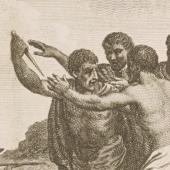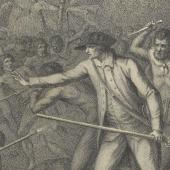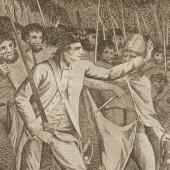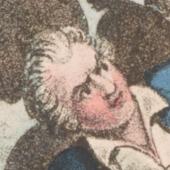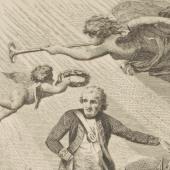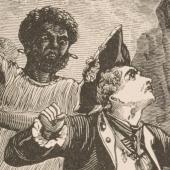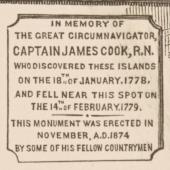The death of Captain Cook
Mythmaking in print
An exhibition by Julien Domercq, winner of the inaugural Cambridge University Library/History of Art Student Curatorial Competition
Captain James Cook’s (1728–1779) three voyages of discovery to the Pacific culminated in his death on 14 February 1779 in Hawaii. Very shortly after the news reached Europe, his death gripped the imagination of writers, poets and artists who saw in the account of the voyage, and in Cook’s tremendous achievements, the values of the Enlightenment. Representing Cook’s death posed a problem for many: how could Rousseauian ‘noble savages’ who lived in what was believed to be the new Arcadia, have killed the greatest hero of the Enlightenment? No eyewitness accounts of Cook’s death were recorded, therefore the development of Cook’s heroic reputation came to be interpreted and produced in the light of the artists’ own ideology, leading to works which not only sought to document, but also to write history. Whilst playing a central role in the mythologizing of Cook’s death, these prints of varying quality and target audiences, also bear witness to the extent to which his discoveries of distant lands and cultures became appropriated into the visual language of European popular culture at the turn of the nineteenth century.
Full images of the exhibits can be viewed by clicking on the large square thumbnails at the foot of this page.

